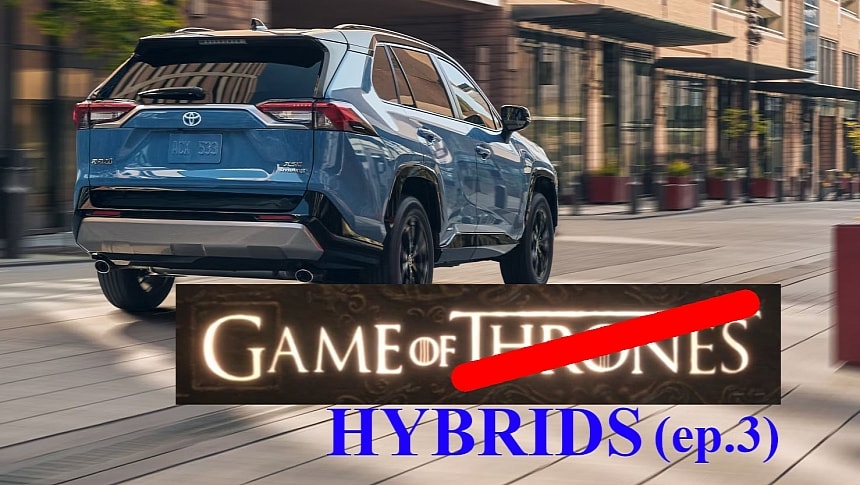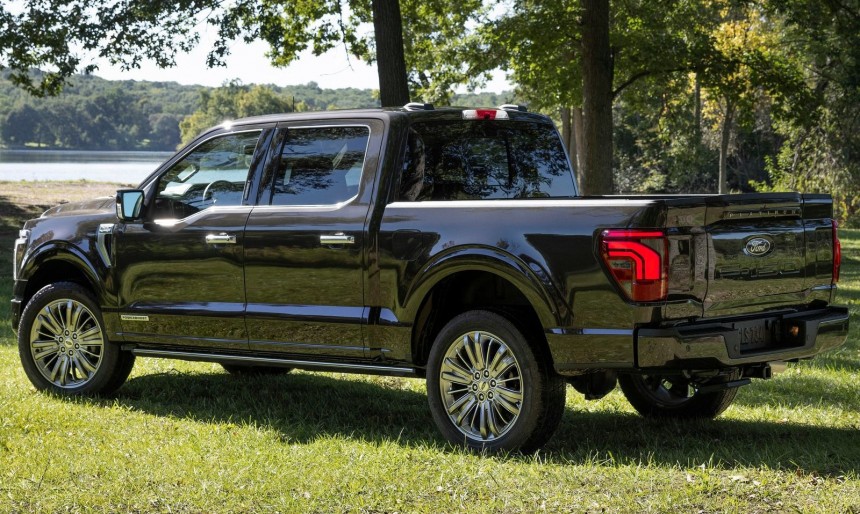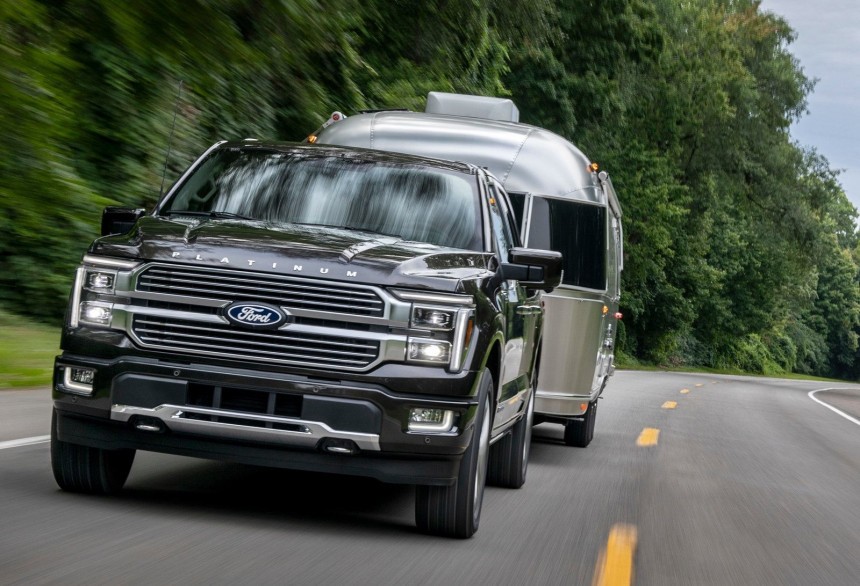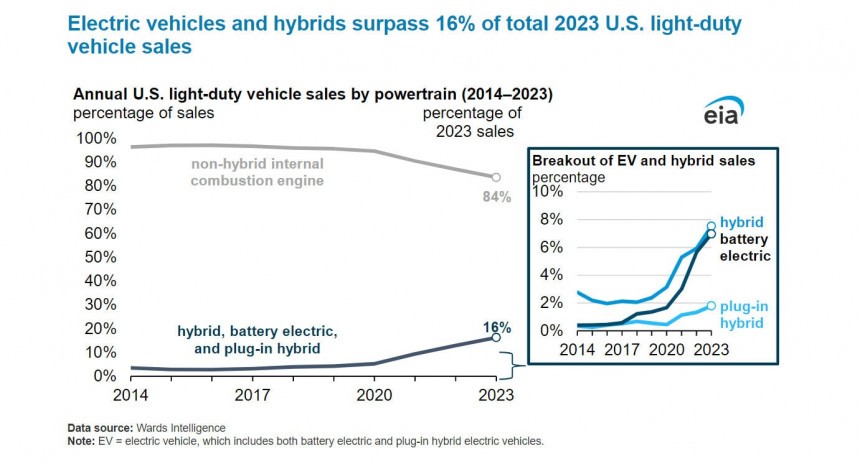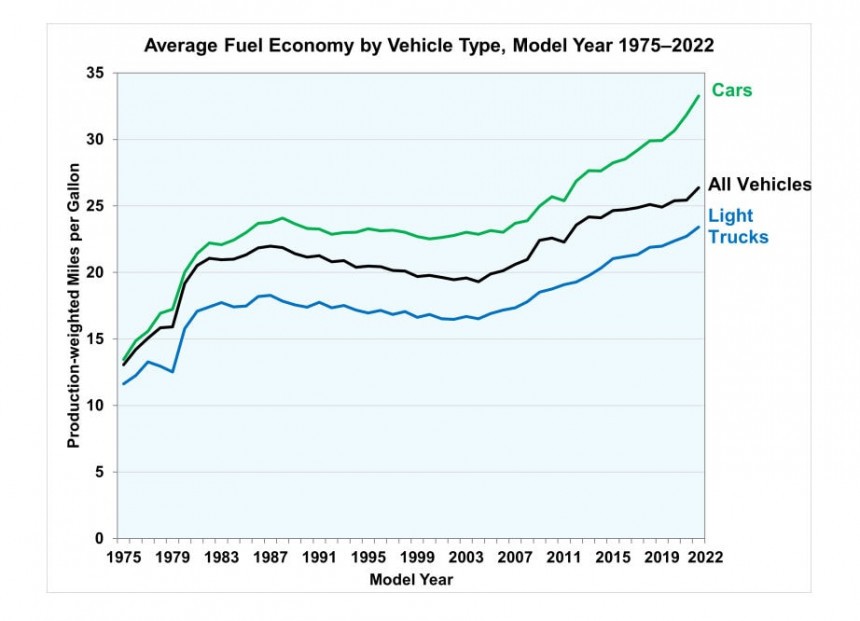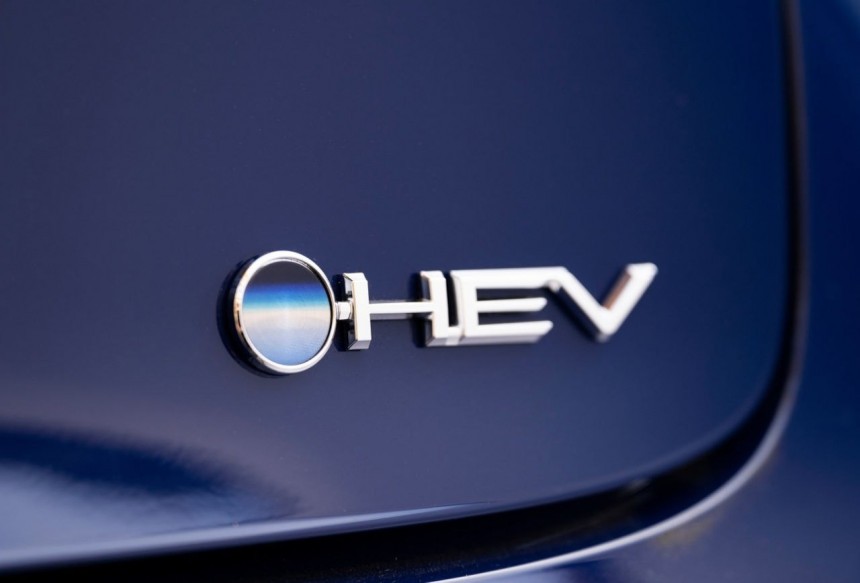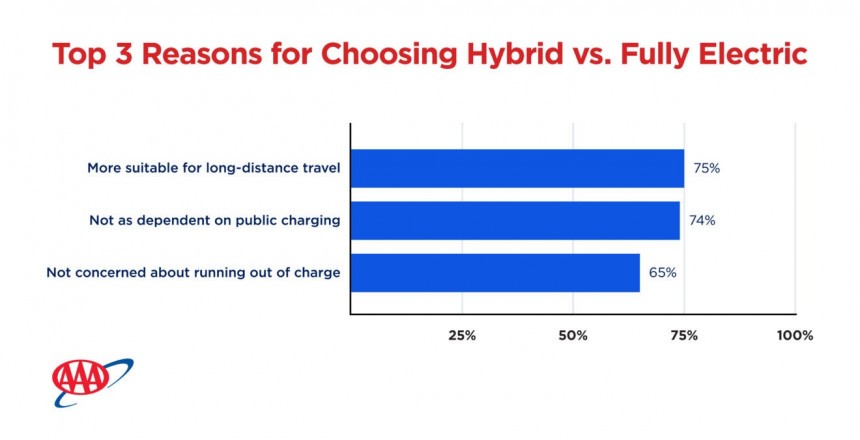The most important conclusion of the second part of this editorial was that EIA forecasts a "stunning oil glut" before the end of this decade. The main culprit is the electric revolution, although, in the first part, we saw surveys emphasizing people's increased interest in hybrids, not in EVs. Well, EVs or not, the oil surplus will happen before the end of this decade, and hybrids already play a big role.
Why do hybrids gain momentum? I explained it when I started this series: the difference in price between gasoline and hybrid versions of the same model is quickly paid off thanks to the hybrid powertrain's better efficiency and consumption, especially in cities.
The best example was the Toyota Corolla: doing the math, the hybrid variant breaks even in less than 500 miles compared to the gasoline variant. I must reckon this is a lucky example in favor of hybrids, as most models out there still see a pretty important price gap between the cheapest gasoline variant and the most affordable hybrid variant.
Before giving you some other examples, we'll keep in mind that a hybrid Corolla has an estimated combined EPA fuel economy of 50 mpg—15 mpg more than its gasoline counterpart. The Federal Highway Administration estimates that, on average, Americans drive less than 15,000 miles per year.
This means a hybrid Corolla will use 300 gallons of unleaded gasoline annually, while its 35-mpg classical ICE counterpart will need around 430 gallons. In other words, you'll need 130 gallons less in a Corolla Hybrid, or even close to 190 if you mainly use the car in the city. The classic ICE is the least efficient in this environment, while the hybrid powertrain consumes much less.
The hybrid powertrain is much more fuel efficient, at 24 mpg, but it also has a hefty price tag: $56,655. The difference of $19,690 means that, for an average price of 3.5 USD/gallon, the hybrid F-150 will break even in more than 320,000 miles. Of course, this so-called "break-even" won't convince anyone to go for the hybrid variant, but there's a catch.
The hybrid powertrain is available only for the 4WD SuperCrew body type, starting with the more premium XLT trim. At this point, we can agree that comparing the entry-level 2WD Regular Cab XL F-150 (basically a workhorse appealing only to companies) and the "family" 4WD SuperCrew XLT F-150 makes no sense.
It's like comparing the Corolla Hybrid, a compact family sedan, to Yaris, a small city car. From an apples-to-apples perspective, the most affordable hybrid F-150 should be compared to the most affordable similar non-hybrid body type and trim, right?
This brings us to the basic 2.7-liter V6 EcoBoost, which starts from $50,090 in the 4WD SuperCrew XLT combination and has an EPA fuel consumption of 20 mpg. Thus, the $6,565 difference in price and the 4-mpg difference in consumption translates to a break-even of around 225,000 miles.
Well, I doubt anyone would consider this an argument favoring the hybrid variant. However, things change significantly if we compare the hybrid to the 3.5-liter V6 EcoBoost variant (which the hybrid powertrain is based on) in the same 4WD SuperCrew XLT combination. This is only $2,705 cheaper but has an 18 mpg lower fuel efficiency.
This time, the hybrid variant's break-even point will be roughly 55,000 miles, or a theoretical 3 years and a half, considering the 15,000-mile yearly average mileage. Prospective customers are more likely to consider the hybrid F-150 now.
In fact, with around 18,000 units sold in April, "a new monthly record," it became "America's top-selling full-size hybrid pickup," according to Ford's officials. This is one-third of the 750,000 F-150 Hybrids sold in 2023. To give you a perspective on the fast-paced trend, last year's F-150 Hybrid sales were 40% higher than in 2022.
Now, let's consider an optimistic average consumption of 20 mpg and a 15,000-mile average yearly mileage, and let's pretend that all the F-150 sold in 2023 were strictly ICE vehicles. A quick math shows that 750,000 ICE F-150s would have consumed more than 560 million gallons last year.
However, in reality, around 50,000 F-150s sold in 2023 were hybrids, and some 24,000 were fully electric. It means that, in theory, 676,000 ICE F-150s would have consumed around 500 million gallons, with the hybrids adding 30 million gallons.
As a result, in our theoretical scenario, the hybrid and electric variants displaced around 30 million gallons—or about 1.5 million oil barrels. According to EIA, a 42-gallon barrel of crude oil results in about 19-20 gallons of gasoline (almost half of that barrel), while the rest is transformed into diesel, jet fuel, or other liquid petroleum gas.
In 2023, the United States sold approximately 15.6 million new cars. 2.5 million were hybrids, plug-in hybrids, and fully electrics. Thanks to the consumption efficiency of electrified powertrains, these 16% of clean cars displaced at least 50 million barrels of crude oil.
It might seem like a joke, as the US crude oil production was about 12-13 million barrels daily in 2023, according to EIA. So, the oil industry should not be worried because the more efficient cars sold in one year displaced the oil produced in less than a week, right? Wrong.
In 2022, hybrids and plug-in vehicles totaled around 1.8 million units, so 2023 saw a 40% sales increase. We should also consider that 2022 was an even worse year for new car sales than COVID-19 2020 (you can thank the Russian dictator for that…), so it would be correct to presume the yearly growth rate for clean car sales will be a conservatory 25-30%.
This way, in 2030, we can expect at least 10 million new hybrids and plug-in vehicles sold, in line with Biden's Administration's plans thanks to the Inflation Reduction Act (which, I remind you, will be jeopardized if the wrong man is the next occupant of the Oval Office).
At the end of this decade, clean car sales will most likely displace at least 200 million barrels of crude oil. So what? This is like two weeks of oil production. But you should also consider that classic ICEs become more efficient. Even if the gains are marginal, the average fuel economy has already passed the 25-mpg bar in 2020.
Well, ICE cars are already at the 35-mpg level, but light trucks and big SUVs, which more Americans choose each year, are still below 25 mpg. Nevertheless, the rising trend is clear, and by 2030, the average fuel economy of ICE vehicles will most likely pass the 30-mpg bar – a 20% improvement over today.
So, in 2030, less than 10 million ICE vehicles will be sold, and they'll be at least 20% more efficient. Let's use our average mileage of 15,000 miles per year scenario again and see how this translates to oil savings.
In 2023, the 13 million 25-mpg new ICE vehicles consumed some 8 billion gasoline gallons produced from about 400 million crude oil barrels. In 2030, the amount of gasoline used in the same 15,000 miles per year scenario by the ICE cars will be less than 5 billion gallons produced from 250 million crude oil barrels.
Combined, the clean cars and the more efficient ICE vehicles would displace around 450-500 million crude oil barrels, or almost two months of crude oil production in today's values. It doesn't seem much, but it's around 10% of oil production. Basically, it's what EIA predicts globally for 2030, as we've seen in the second part of this editorial.
Moreover, global warming and climate change will only make things worse. A recent study from two researchers from Harvard University and Northwestern University warns that "the macroeconomic damages from climate change are six times larger than previously thought."
In short, for every one-degree increase in global temperature, the world GDP will decline by at least 12%. Of course, this will also have catastrophic effects on oil industry companies, which are the biggest part of the climate problem.
Maybe five years from now, Big Oil won't have such a hard time tackling a 10% oil oversupply. But as the trend is accelerating, only a fool can still believe oil or the internal combustion engines using it are here to stay in the long run.
The bet on hybrids is only a short and medium-term bet but, frankly, quite a necessary one. Because larger cars such as trucks and SUVs are sold in larger numbers than regular cars, hybrids lead to a fuel economy of at most 25% compared to classic ICEs, while the CO2 emissions impact is reduced by only 10%, compared to around 50% for fully electric cars.
While not impressive, it's an important benefit on the grand scale. Basically, if people choose hybrids instead of battery electric cars today, it's still a good thing, although those engines in the hybrid powertrains will still cause pollution problems for decades. But maybe e-fuels will become a viable solution, huh?
Honda and General Motors stated they will use the money from the spike in hybrid sales to develop even better full-electric technology, and you can be sure this is what most people in the industry will do.
Hybridization suddenly became a less costly and easier way to increase the efficiency of ICE-based powertrains, and you don't have to spend money anymore on developing new and complicated technologies for the next generations of internal combustion engines.
It may come as a surprise, but this is a crystal clear sign that the industry is slowly preparing to ditch the ICE sometime in the future. Of course, there is news out there that contradicts me, like the Renault-Geely joint venture for ICEs or the Toyota, Mazda, and Subaru new plans for improved inline, rotary, and boxer engines.
But these are just exceptions, not the norm. Almost all these new engines will be part of hybrid systems or range-extenders for battery electric vehicles. So, they simply align with the transition to non-ICE powertrains, either using batteries or hydrogen. Oh, they also mean those companies still clinch, hoping that e-fuels will be the real deal, not fairytales.
But what we see today, namely hybrids "hunting" the ICEs, will be replicated as fierce competition between much more affordable "old-school" battery cars and hybrid vehicles. I believe hybrids will be preferred for the next decade or so thanks to a better range than old-tech batteries and more affordable prices than solid-state batteries with similar ranges to their hybrid counterparts.
Somewhere between 2040 and 2050, hybrids will start making less and less sense. By then, the "oil peak" will definitely trigger huge changes in the global economy and the industry. So, in my opinion, hybrids will only reign for about 15-20 years from now. I could be wrong, but today's data suggest the contrary.
Ultimately, we should acknowledge that we're in the middle of a tremendous shift. Metaphorically speaking, these days, we as a society are like a junky slowly realizing he has to give up drugs not only to survive but to thrive and overcome all the obstacles ahead.
Unfortunately, we're not that strong to simply say "Stop!" tooil drugs, partly because of Big Oil drug dealers, partly because we're afraid of collapsing economy withdrawal symptoms. That's why we had to take the less painful way of transitioning from ICEs high-risk drugs to hybrids low-risk ones until the body is ready to give up on fossil fuels all toxic substances.
Maybe you'll disagree with my conclusions, maybe not. After all, I'm still an electrohead, but I think I'm not a hardcore one anymore but open to positive compromises. The only problem is that I doubt we could ever reach a compromise on climate change.
From that perspective, it remains to be seen if hybrids will help us adapt and survive. If not, it won't matter anymore, as we'll plunge directly into a Mad Max scenario. Did you see any hybrid or electric cars in those movies? Right.
The best example was the Toyota Corolla: doing the math, the hybrid variant breaks even in less than 500 miles compared to the gasoline variant. I must reckon this is a lucky example in favor of hybrids, as most models out there still see a pretty important price gap between the cheapest gasoline variant and the most affordable hybrid variant.
Before giving you some other examples, we'll keep in mind that a hybrid Corolla has an estimated combined EPA fuel economy of 50 mpg—15 mpg more than its gasoline counterpart. The Federal Highway Administration estimates that, on average, Americans drive less than 15,000 miles per year.
This means a hybrid Corolla will use 300 gallons of unleaded gasoline annually, while its 35-mpg classical ICE counterpart will need around 430 gallons. In other words, you'll need 130 gallons less in a Corolla Hybrid, or even close to 190 if you mainly use the car in the city. The classic ICE is the least efficient in this environment, while the hybrid powertrain consumes much less.
America's sweetheart: F-150's example
Say, what's the best-selling car in the US? Of course, it's the Ford F-150 pick-up truck. According to Ford's website, the most affordable variant starts from $36,965. It's the 2WD Regular Cab 6.5' Box in the basic XL trim and powered by a 5.0-liter V8, good for a combined EPA fuel consumption of 17 mpg.The hybrid powertrain is much more fuel efficient, at 24 mpg, but it also has a hefty price tag: $56,655. The difference of $19,690 means that, for an average price of 3.5 USD/gallon, the hybrid F-150 will break even in more than 320,000 miles. Of course, this so-called "break-even" won't convince anyone to go for the hybrid variant, but there's a catch.
It's like comparing the Corolla Hybrid, a compact family sedan, to Yaris, a small city car. From an apples-to-apples perspective, the most affordable hybrid F-150 should be compared to the most affordable similar non-hybrid body type and trim, right?
This brings us to the basic 2.7-liter V6 EcoBoost, which starts from $50,090 in the 4WD SuperCrew XLT combination and has an EPA fuel consumption of 20 mpg. Thus, the $6,565 difference in price and the 4-mpg difference in consumption translates to a break-even of around 225,000 miles.
Well, I doubt anyone would consider this an argument favoring the hybrid variant. However, things change significantly if we compare the hybrid to the 3.5-liter V6 EcoBoost variant (which the hybrid powertrain is based on) in the same 4WD SuperCrew XLT combination. This is only $2,705 cheaper but has an 18 mpg lower fuel efficiency.
This time, the hybrid variant's break-even point will be roughly 55,000 miles, or a theoretical 3 years and a half, considering the 15,000-mile yearly average mileage. Prospective customers are more likely to consider the hybrid F-150 now.
In fact, with around 18,000 units sold in April, "a new monthly record," it became "America's top-selling full-size hybrid pickup," according to Ford's officials. This is one-third of the 750,000 F-150 Hybrids sold in 2023. To give you a perspective on the fast-paced trend, last year's F-150 Hybrid sales were 40% higher than in 2022.
However, in reality, around 50,000 F-150s sold in 2023 were hybrids, and some 24,000 were fully electric. It means that, in theory, 676,000 ICE F-150s would have consumed around 500 million gallons, with the hybrids adding 30 million gallons.
As a result, in our theoretical scenario, the hybrid and electric variants displaced around 30 million gallons—or about 1.5 million oil barrels. According to EIA, a 42-gallon barrel of crude oil results in about 19-20 gallons of gasoline (almost half of that barrel), while the rest is transformed into diesel, jet fuel, or other liquid petroleum gas.
Clean cars' oil displacement is nothing to worry about. Or is it?
So, here you are. Thanks to the hybrid and electric variants, the "army" of F-150s sold in 2023 saved about a million and a half oil barrels. Keep in mind that these savings are conservatory because pick-up trucks are heavy vehicles, and hybrid powertrains have a lower consumption advantage than smaller SUVs or regular cars.In 2023, the United States sold approximately 15.6 million new cars. 2.5 million were hybrids, plug-in hybrids, and fully electrics. Thanks to the consumption efficiency of electrified powertrains, these 16% of clean cars displaced at least 50 million barrels of crude oil.
It might seem like a joke, as the US crude oil production was about 12-13 million barrels daily in 2023, according to EIA. So, the oil industry should not be worried because the more efficient cars sold in one year displaced the oil produced in less than a week, right? Wrong.
This way, in 2030, we can expect at least 10 million new hybrids and plug-in vehicles sold, in line with Biden's Administration's plans thanks to the Inflation Reduction Act (which, I remind you, will be jeopardized if the wrong man is the next occupant of the Oval Office).
At the end of this decade, clean car sales will most likely displace at least 200 million barrels of crude oil. So what? This is like two weeks of oil production. But you should also consider that classic ICEs become more efficient. Even if the gains are marginal, the average fuel economy has already passed the 25-mpg bar in 2020.
Well, ICE cars are already at the 35-mpg level, but light trucks and big SUVs, which more Americans choose each year, are still below 25 mpg. Nevertheless, the rising trend is clear, and by 2030, the average fuel economy of ICE vehicles will most likely pass the 30-mpg bar – a 20% improvement over today.
In 2023, the 13 million 25-mpg new ICE vehicles consumed some 8 billion gasoline gallons produced from about 400 million crude oil barrels. In 2030, the amount of gasoline used in the same 15,000 miles per year scenario by the ICE cars will be less than 5 billion gallons produced from 250 million crude oil barrels.
Combined, the clean cars and the more efficient ICE vehicles would displace around 450-500 million crude oil barrels, or almost two months of crude oil production in today's values. It doesn't seem much, but it's around 10% of oil production. Basically, it's what EIA predicts globally for 2030, as we've seen in the second part of this editorial.
Hybrids, essential to the transition (hopefully not to a Mad Max scenario…)
There's too much uncertainty these days because of shakings in the global world order. Almost all the forecasts predicting the booming of EV sales are suddenly of no use because the constant assault of autocratic regimes on democracies hurts the global economy.Moreover, global warming and climate change will only make things worse. A recent study from two researchers from Harvard University and Northwestern University warns that "the macroeconomic damages from climate change are six times larger than previously thought."
In short, for every one-degree increase in global temperature, the world GDP will decline by at least 12%. Of course, this will also have catastrophic effects on oil industry companies, which are the biggest part of the climate problem.
Maybe five years from now, Big Oil won't have such a hard time tackling a 10% oil oversupply. But as the trend is accelerating, only a fool can still believe oil or the internal combustion engines using it are here to stay in the long run.
The bet on hybrids is only a short and medium-term bet but, frankly, quite a necessary one. Because larger cars such as trucks and SUVs are sold in larger numbers than regular cars, hybrids lead to a fuel economy of at most 25% compared to classic ICEs, while the CO2 emissions impact is reduced by only 10%, compared to around 50% for fully electric cars.
Honda and General Motors stated they will use the money from the spike in hybrid sales to develop even better full-electric technology, and you can be sure this is what most people in the industry will do.
Hybridization suddenly became a less costly and easier way to increase the efficiency of ICE-based powertrains, and you don't have to spend money anymore on developing new and complicated technologies for the next generations of internal combustion engines.
It may come as a surprise, but this is a crystal clear sign that the industry is slowly preparing to ditch the ICE sometime in the future. Of course, there is news out there that contradicts me, like the Renault-Geely joint venture for ICEs or the Toyota, Mazda, and Subaru new plans for improved inline, rotary, and boxer engines.
But these are just exceptions, not the norm. Almost all these new engines will be part of hybrid systems or range-extenders for battery electric vehicles. So, they simply align with the transition to non-ICE powertrains, either using batteries or hydrogen. Oh, they also mean those companies still clinch, hoping that e-fuels will be the real deal, not fairytales.
Hybrids paving the way for battery electric or hydrogen cars
In the meantime, battery tech news makes me believe that around 2030, we'll witness a major shift in electrification, thanks to solid-state batteries (which are no fairytales!). Of course, because of basic economic principles – you can't just kill today's liquid-state lithium-ion battery investments - solid-state batteries will be available on more expensive cars.But what we see today, namely hybrids "hunting" the ICEs, will be replicated as fierce competition between much more affordable "old-school" battery cars and hybrid vehicles. I believe hybrids will be preferred for the next decade or so thanks to a better range than old-tech batteries and more affordable prices than solid-state batteries with similar ranges to their hybrid counterparts.
Ultimately, we should acknowledge that we're in the middle of a tremendous shift. Metaphorically speaking, these days, we as a society are like a junky slowly realizing he has to give up drugs not only to survive but to thrive and overcome all the obstacles ahead.
Unfortunately, we're not that strong to simply say "Stop!" to
Maybe you'll disagree with my conclusions, maybe not. After all, I'm still an electrohead, but I think I'm not a hardcore one anymore but open to positive compromises. The only problem is that I doubt we could ever reach a compromise on climate change.
From that perspective, it remains to be seen if hybrids will help us adapt and survive. If not, it won't matter anymore, as we'll plunge directly into a Mad Max scenario. Did you see any hybrid or electric cars in those movies? Right.
